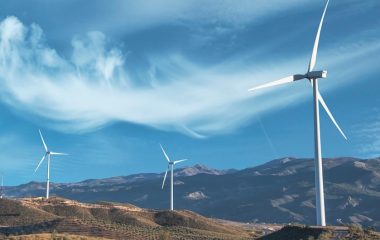
Photo: Damir Miljević
The energy transition is not a threat to the Western Balkans, as it is often misrepresented, but rather a development opportunity, according to Damir Miljević, an energy transition consultant and member of the Regional center for sustainable energy transition (RESET). In an interview with Balkan Green Energy News, he says the energy transition is an industrial revolution based on harnessing the energy of the sun, wind, and water, resources the region has in abundance, unlike many countries.
Miljević says there is a threat that the energy transition in the region could be carried out without planning, making it similar to the post-communist privatization, which was disastrous. To avert such an outcome, he proposes establishing a comprehensive social dialogue and setting a coal phaseout date. This could turn the energy transition into a development opportunity, he said, supporting his claim with the examples of Poland and North Macedonia. This would also enable the region to be at the heart of a new industrial revolution and a new global distribution of labor, he says.
Miljević, alongside Vjekoslav Domljan, co-authored a document titled the Green Plan – a golden opportunity for economic recovery from the the COVID-19 pandemic, which was produced as part of Renewable Energy Policy Consensus 2.0 (REPCONS 2), a project implemented by civil society organizations NERDA from Bosnia and Herzegovina, ASOR from Serbia, and CLEAN from Montenegro, with Balkan Green Energy News as media partner.
Energy transition is new industrial revolution
Miljević says the energy transition in the region has been misrepresented as a threat because the process has been essentially misunderstood. However, according to him, “the energy transition is in fact a new industrial revolution.”
“A new industrial revolution is under way, one based on renewable energy sources, which have an almost negligible marginal cost per unit of energy output (solar and wind) and which are also free and widely available. With the development of the Internet and digitalization of all processes, this will lead to dramatic changes in the way we live and work as well as in the organization of society and distribution of power, as was the case with the previous industrial revolutions,” explains Miljević, who is also involved in the EU’s Platform for Coal Regions in Transition.
Switching from centralized to decentralized energy generation and distribution, with a large number of producers and suppliers, is the key element of this new revolution, according to him. Decentralization enables everyone to produce, consume, and distribute their own energy, he said.
Politicians are portraying the energy transition as a threat because they fear losing control over the energy sector
That is the reason why the pushback from those who have relative monopoly over energy generation and distribution is so strong, and that is why they are doing everything they can to halt the process, or at least delay it for as long as possible. And this, according to him, is the second reason why the energy transition is being represented as a threat.
The process of transition and change is always painful and daunting, and politicians tend to avoid resolving controversial issues such as shutting down coal-fired power plants and restructuring coal regions. That is why they keep emphasizing that the energy transition is an obligation imposed on us by others and that we would rather not pursue it, but we have to. Politicians are also in fear of losing their control over the electricity sector, which they exercise through public enterprises, he said. Once energy production is decentralized and democratized, these enterprises will no longer be the only players on the electricity market, and perhaps not even the major ones, according to Miljević.
The region did not have the fossil fuels that drove global growth until recently, but it is rich in solar, wind, and hydro energy
Citizens, local communities, and businesses, according to Miljević, must be educated on all the opportunities that come with the energy transition – from new jobs and economic growth to a clean and healthy environment.
He recalled that until recently economic and social development in the world, and in the region, was based on oil, natural gas, and high-quality coal, and that those who were rich in these fuels had an advantage over others. The countries in this region, however, did not have any of it, since lignite, which is widely used here, is the type of coal with the lowest energy content.
It is in our own interest to speed up the energy transition
Today, development is based on the energy of the sun, wind, and water. When it comes to these resources, the region has a comparative advantage over its neighbors, and that begs the question: how can we not see that it is in our own interest to speed up the energy transition – our only opportunity for growth in the context of the new global distribution of labor and the only model that can accelerate the post-pandemic recovery, according to him.
How Poland, North Macedonia, and Czech Republic saw energy transition as development opportunity
The Czech Republic is carrying out a fast-paced transition, Miljević says, noting that the country is already producing green hydrogen, building a massive factory to make electric batteries, and restructuring its coal regions. Poland, which is heavily dependent on coal-based electricity generation, is quickly moving towards wind power, a sector that is expected to create some 60,000 jobs to replace those that will be lost in the country’s coal regions.
North Macedonia has secured its first funds from IPA III
Among the Western Balkan countries, North Macedonia has made the biggest strides, pursuing a fast-paced transition that involves shutting down coal-fired power plants and building solar and wind facilities. The country has already secured grants from the EU’s IPA III funds for this purpose. North Macedonia plans to create 10,000 new jobs to compensate for those that will be lost due to coal phaseout, and ensure an additional 5,000 sustainable jobs.
Prerequisites for successful transition: social dialogue and coal phaseout date
For the energy transition to be accepted as a development opportunity, it is necessary to establish a comprehensive social dialogue that will include everyone, because the transition will affect everyone. When he says everyone, Miljević means experts, NGOs, businesses, and local communities.
A RESET survey of more than 100 experts in Bosnia and Herzegovina, Montenegro, and Serbia, as part of its work on the Barometer of Sustainable Energy Transition, found that experts feel that they are not involved enough in development planning, that there is no transparency, and that citizens and businesses are not engaged. They also believe that state institutions and state-owned power utilities style themselves as the drivers of the energy transition, but that they lack the capacities for that role.
Business, local communities, and citizens will be the drivers of the energy transition, not states or state-owned power utilities
Miljević says the bulk of experience from the EU shows that the drivers of the energy transition were not large energy companies, but rather businesses, local communities, and citizens, helped by a favorable regulatory and economic environment.
Setting a coal phaseout date is an equally important condition for avoiding an unplanned, purely market-based transition and ensuring a successful, sustainable and just transition.
Setting a coal phaseout date sends a message to investors
Setting a coal phaseout date and making it legally binding sends a strong message to society and the international community that a country is truly committed to the transition and that the process is irreversible. That message is important for potential investors as well, because they will not invest in a country that is not irrevocably embarked on the new industrial revolution, according to Miljević.
It also sends a message to young people about the direction they should choose in their education, and where to look for jobs, as well as to the education system, which needs to adapt to the new circumstances. The message is also sent to the business community, to firms tied to the coal sector and coal regions.
Shying away from setting a coal phaseout date is political opportunism
It creates the conditions to handle coal phaseout in a planned way so as to ensure the transition is just and its adverse impact reduced to a minimum. It also facilitates access to existing funds, programs, and technical assistance for coal regions.
“As much as it brings easy political gains in the short term, shying away from setting the date can have a devastating effect in the medium term – on society, the economy, and the population, and especially on the coal-dependent regions, which could find themselves in disastrous social-economic circumstances if left at the mercy of market forces,” says Miljević.
There is plenty of financing available for transition and green energy power plants
The EU has developed the Green Agenda for the Western Balkans and the Economic and Investment Plan for the region, which comprises EUR 9 billion in IPA grant funding, 30% of which for the energy transition, along with a further EUR 20 billion in a guarantee fund aimed at lowering the costs of borrowing.
North Macedonia is drawing money for renewables, while BiH has requested funding for roads
However, not all countries are equally willing to use the funding for the energy transition. North Macedonia will use its first installment of the funding for developing renewable energy sources, while Bosnia and Herzegovina has requested money for road construction, according to him.
To get the money, however, countries in the region will have to develop a roadmap to decarbonization, produce action plans, and prepare projects that will be in line with the commitments from the Sofia Declaration and the criteria for drawing funding under the Economic and Investment Plan for the Western Balkans.
Countries that offer developed and realistic projects will get the money first
This time around, he added, countries that already have mature projects will get the EU’s money first. This is precisely what European Commission President Ursula von der Leyen stressed during her recent visit to the region. These funds, according to Miljević, should be invested in areas that do not generate profit on their own, such as environmental protection, efforts to tackle waste, soil and water pollution, a just transition and the restructuring of coal regions through job creation and green economy innovation, as well as in upgrades to the distribution and transmission network and the development of infrastructure for the electrification of transport and district heating and cooling.
Private investors and banks have enough capital to finance wind and solar projects
When it comes to renewable energy sources, there is enough money available from other sources, primarily private investors, according to Miljević. The examples are Serbia, with its agreement with UGT Renewables and investments by CWP, Bosnia and Herzegovina, where private investors are developing more than 200 MW of solar and 150 MW of wind projects, as well as international banks (EBRD and KfW) and the market for green bonds, according to him. It is also possible to mobilize funding from citizens and businesses by developing the models of prosumers, energy cooperatives, citizen energy, and citizens’ participation in financial large-scale commercial projects, he added.









Be the first one to comment on this article.